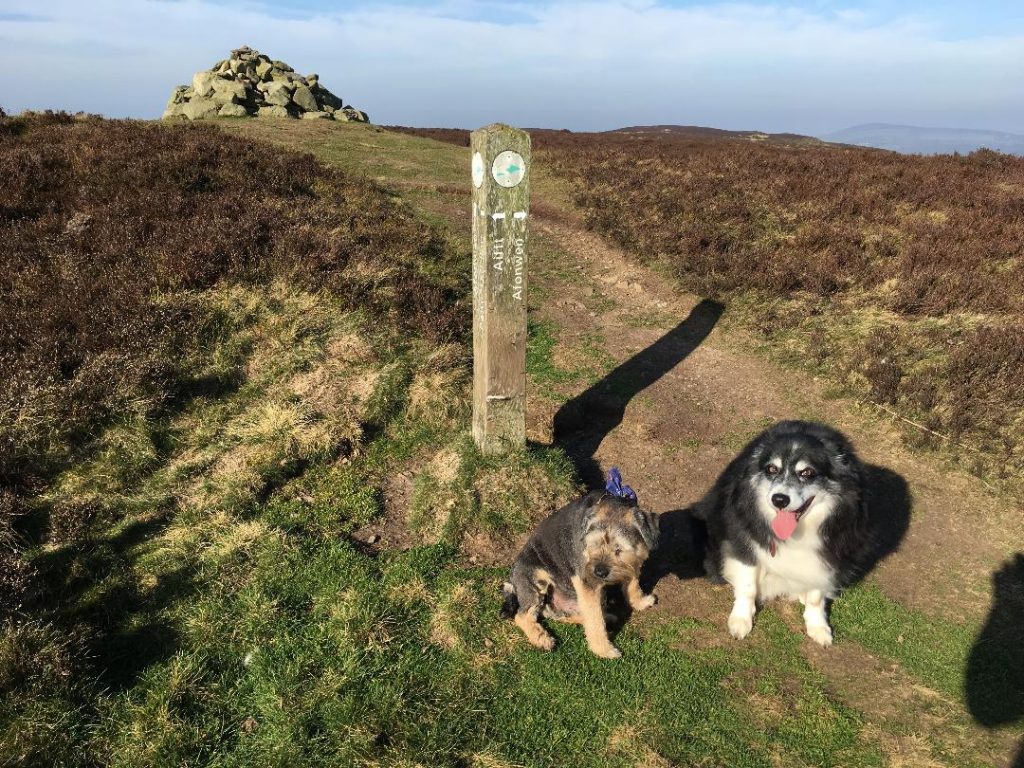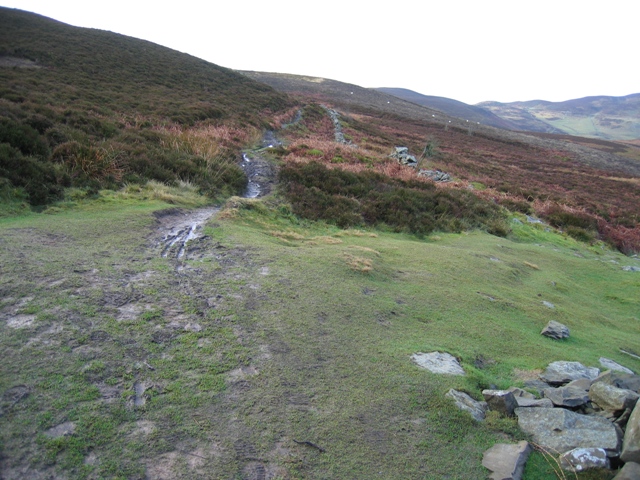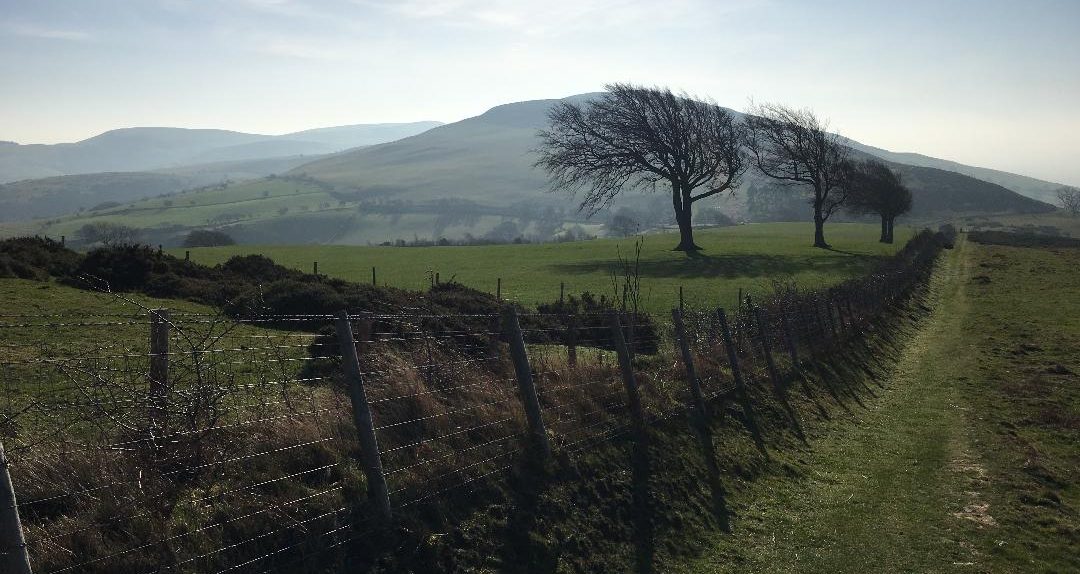Today has been spent walking one of my favourite haunts, a secret place among the quieter paths of the Clwydian hills. With the Vale of Clwyd ethereal under blue and gold, and a soft breeze riffling my hair, I watched as a skylark sang and pirouetted into infinity in the clear skies above me on this unseasonably warm and glorious Sunday in late February.
The Clwydian Range, stretching from Llandegla in the south to Prestatyn in the north, has been inhabited by humans for thousands of years, as witnessed by Neolithic remains found in the limestone caves between Graianrhyd and Llandegla, and the discovery of animal bones including those of bison, woolly rhinoceros and hyenas at the prehistoric settlement at Gop Hill Cairn, near Trelawnyd, the second largest prehistoric mound in Britain, and according to local legend, the site of Queen Boudicca’s final battle.

Photograph courtesy of Ride North Wales/Beicio Gogledd Cymru
The remains of iron-age hillforts are still evident in the landscape, along with earlier bronze-age burial mounds. It is believed that these hillforts were occupied by the Deceangli, a local Celtic tribe, who submitted to the Romans in a campaign of AD 48. In 1816, a hoard of Roman coins was uncovered on Moel Fenlli, and in 1962 three copper bronze-age flat axes were also discovered there. Other excavations have revealed Roman pottery and flint arrowheads in the same place, all of which point to significant activity here on either side of the iron- age. In the late 19th century there was even a short lived ‘Cilcain Gold Rush’, reputedly triggered by the discovery of a gold nugget at the remains of a quarry near Moel Arthur.

Ancient drovers’ roads also cross the landscape, a legacy from the days when livestock was herded on foot from the area to markets in England.

Photograph by kind permission of John S. Turner
There were of course stop-off points along the way, including the village of Cilcain, which despite its small size at one time boasted a smithy (now a private house) and seven pubs! Locals and visitors to the village today continue to be very well served by The White Horse Inn, the last remaining watering hole.

Photograph by kind permission of Phil Parsons, Delfryn Design
Sheep and cattle still graze these peaceful uplands, where buzzards and crows tumble in aerial battle, kestrels hover, and small birds make their nests amid golden groves of gorse.
In this hauntingly beautiful landscape of constantly changing light and wind-chased clouds, a place where shadows and memories lie dark and deep, we can still glimpse traces of our past among the stones, rocks, and in the very earth beneath our feet.
Inspired by a visit to the Clwydian Hills on Sunday 24th February 2019, a record-breaking weekend for Welsh weather! Photograph by Jon Bateson.

This is exquisite…I literally kept pausing to feel what you wrote xxx
Thank you so much, Annette – what a beautiful thing to say!
im homesick now
Paul – keep checking in. I’m going to be featuring lots of interesting things from our part of the world, but I want you to be happy, not sad!
Beautiful piece of writing. I know where we will be going for our next walk!
Thank you so much, Julie!
Oh so good, Sonia.
You’ve got to experience it to feel it!
Thank you so much, Gwen!
We have a fascinating history in north east Wales! I wish we learned more about this sort of stuff in school! I’ve really taken an interest in the medieval period here over the last year or so.
I look forward to reading more articles!
Hi Gareth, thank you so much for getting in touch. Yes, I wish I’d learned more of this history in school, too, but the research has been fascinating. There will be more articles coming soon!
This is lovely Sonia and not before time! I’ll look forward to future posts, thank you
Thanks for your kind words, Lyn!
Loved the evocative descriptions which draw one into the experience. Great for those of us unable to actually be there. It fires the imagination. By the way I doubt that teaching more history at school would have much effect. Age brings interest I have found.
I’m so glad you enjoyed your ‘visit’ to the Clwydians! Thank you for your kind words.
Thank you for your kind words, Agnes – I’m so glad you enjoyed it!
I love walking around the Clwydians but unfortunately being English I am banned for the moment.
I would have loved to go there tomorrow morning to watch the sun coming up and to build up an appetite for my Christmas dinner but I will have to settle for the Wirral Way and looking out at the hills from the flat land at Parkgate 🙂
Thank you so much for getting in touch. Now that restrictions have been lifted, I hope you’ve enjoyed many more visits to the Clwydians 🙂
Thank you for this lovely piece of writing and the photographs. This area of Clwyd is my home although I do not live there at the present time. I am a landscape artist and have painted many artworks from this area. Diolch.
Hi Lynne, diolch o galon am dy geiriau caredig. I’ve just visited your website, and I think your work is beautiful. The Clwydians and surrounding area certainly inspire creatives!